Introduction This report describes the activities of Meru Veterinary unit in April 2014
Introduction
This report describes the activities of Meru Veterinary unit in April 2014. The reporting period was characterized by the onset of rains in the Meru and Laikipia/ Samburu conservation areas and consequent dispersal of wildlife to access lush pastures and browse in wet season grazing areas. In samburu national reserve for instance, wildlife authorities report that elephants dispersed from the reserve into community land and conservancies in parts of Isiolo. Although some of these wildlife dispersal areas are reported to be insecure, there were few incidences of injured animals reported partly because of inadequate surveillance and a lack of access for patrol teams to some areas.
Case #1 Snared Buffalo:
Date: 14th April 2014
Species: Buffalo
Location: Meru National Reserve
History:
In Meru national park, a buffalo with a wire snare on its forelimb was reported on 14th April but we were not successful in tracking this animal for treatment.
Case # 2 Treatment of an elephant for colic:
Date: 11th April 2014
Species: Elephant
Sex: Female
Age: 30 year old
Location: Samburu National Reserve
History:
Save the Elephants field research unit in Samburu national reserve reported that a 30 year old female elephant showed progressive emaciation, dehydration and restlessness. The female elephant known as Cherry which had a 6 month old calf was first observed by the veterinarian in charge of the Lewa unit on 2nd April who advised intense monitoring.
Examination:
Subsequently on 9th April when Cherry was referred to Meru MVU for further management she had developed typical signs of colic:
• Listlessness and emaciation. Body condition score 2 on a scale of 1 - 5 • Anorexia, dehydration and no defecation was observed following several hours of tracking • Distended abdomen • Lying down frequently for prolonged periods in the river bank and rolling
Evaluation:
This condition was diagnosed as acute obstructive colic which has poor prognosis in elephants. Cherry was also considered an anesthetic risk hence we advised monitoring and rescue of the calf. She died two days later from complications associated with colic.
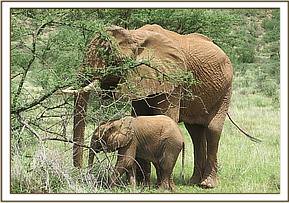
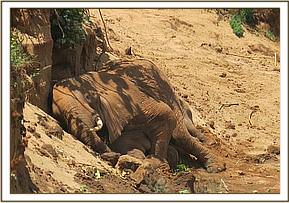
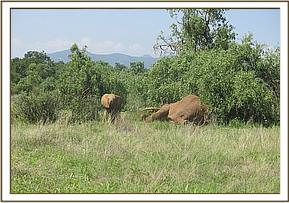

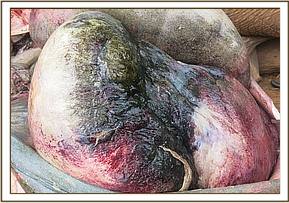


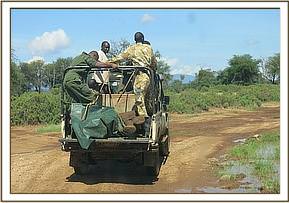
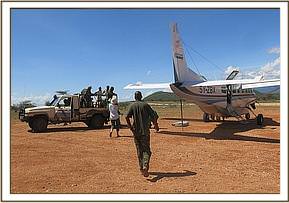

Rescue of the calf:
The 6 month old male calf was captured with the assistance of rangers from Samburu national reserve and Save the Elephants trust and later flown to the DSWT orphanage in Nairobi.
Autopsy:
An autopsy revealed congestion and hemorrhages on the visceral surfaces of the gut. Necrosis of the omentum and parts of the small and large intestines was observed. There was rupture of the cecum and associated acute peritonitis. Extensive necrosis and hemorrhages on the gut mucosal surfaces. Dry blood stained digested matter was found in the small intestines due to prolonged transit time.
Report by: Bernard Rono